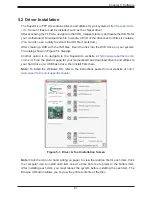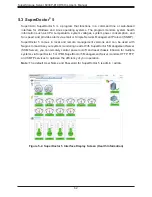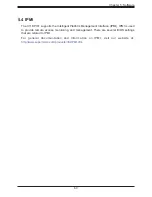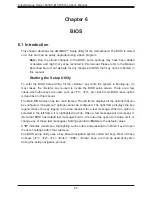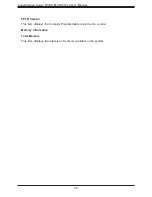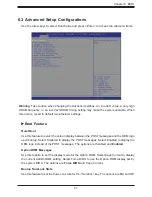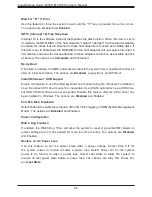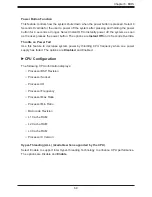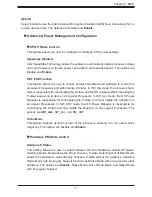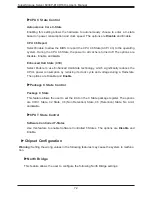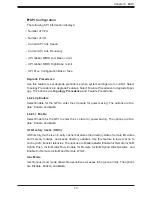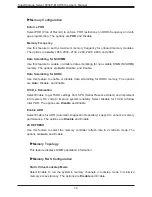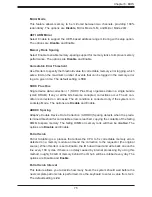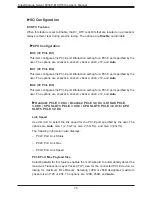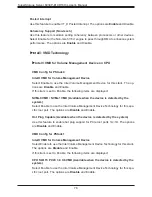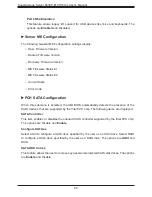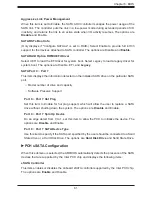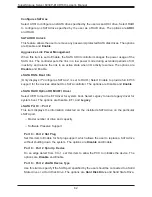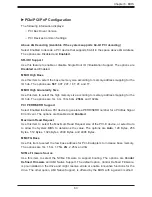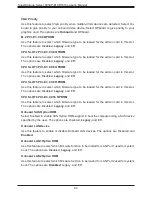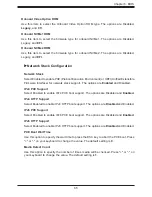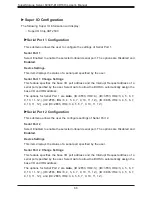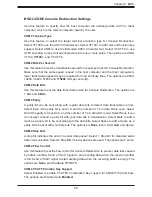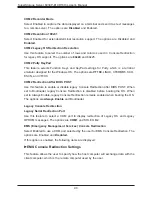
Chapter 6: BIOS
75
Mirror Mode
This feature allows memory to be mirrored between two channels, providing 100%
redundancy. The options are
Disable
, Mirror Mode 1LM, and Mirror Mode 2LM.
UEFI ARM Mirror
Select Enable to support the UEFI-based address range mirroring with setup option.
The options are
Disable
and Enable.
Memory Rank Sparing
Select Enable to enable memory-sparing support for memory ranks to improve memory
performance. The options are
Disable
and Enable.
Correctable Error Threshold
Use this item to specify the threshold value for correctable memory-error logging, which
sets a limit on the maximum number of events that can be logged in the memory-error
log at a given time. The default setting is
100
.
SDDC Plus One
Single device data corr1 (SDDC Plus One) organizes data in a single bundle
(x4/x8 DRAM). If any or all the bits become corrupted, corrections occur. The x4 con-
dition is corrected on all cases. The x8 condition is corrected only if the system is in
Lockstep Mode. The options are
Disable
and Enable.
ADDDC Sparing
Adaptive Double Device Data Correction (ADDDC) Sparing detects when the prede-
termined threshold for correctable errors is reached, copying the contents of the failing
DIMM to spare memory. The failing DIMM or memory rank will then be disabled. The
options are
Disable
and Enable.
Patrol Scrub
Patrol Scrubbing is a process that allows the CPU to fix correctable memory errors
detected on a memory module and send the correction to the requestor (the original
source). When this item is set to Enable, the IO hub will read and write back one cache
line every 16K cycles, if there is no delay caused by internal processing. By using this
method, roughly 64 GB of memory behind the IO hub will be scrubbed every day. The
options are Disable and
Enable
.
Patrol Scrub Interval
This feature allows you to decide how many hours the system should wait before the
next complete patrol scrub is performed. Use the keyboard to enter a value from 0-24.
The default setting is
24
.

